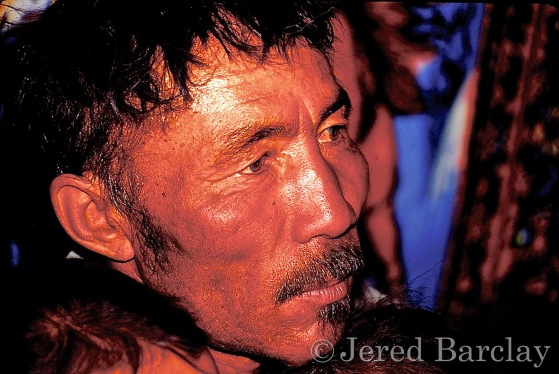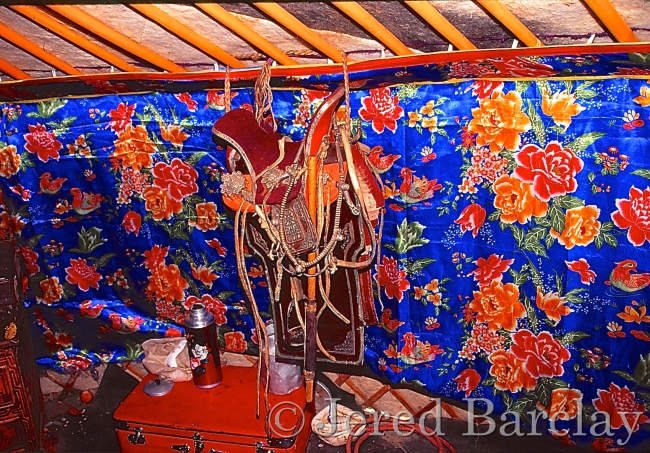
This incredible face tells the viewer how hard life is with the nomadic Mongolians. She has eleven children, all of whom have heavy duty daily chores that would make most American kids run for the hills. Their diet consists mainly of meat from the animas they raise. Growing vegetables is rare as they move from location to location for the best grazing for their herds. The Chinese call the Mongolians “wolves”. The Mongolians call the Chinese. whose diet consists mainly of vegetables, “sheep”!

This father of the family has to be a provider, an expert herder, a patriarch, mechanic, tanner, welder, hunter, accountant etc. The nearest town is sometimes 100 miles away. Every line in his face shows the weight of all those responsibilities.

Visits from foreigners are rare.The family is mesmerized by their presence, bringing them a sense of the outside world they will never see.




